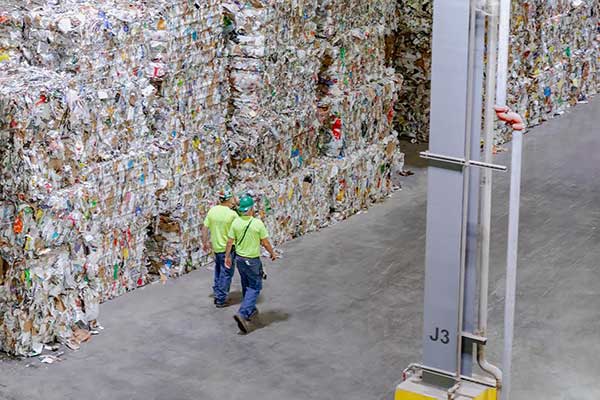Tips to reduce your risk and insurance-related costs.
Manufacturers like you must navigate complex challenges. From market conditions to labor shortages. You deal with it all, while making tough decisions that impact your business and employees.
To help, I’ve identified several risk and insurance trends facing the industry in 2023, including cost-effective—and cost-saving—steps you can take to protect your business.
Inflation has impacted nearly every aspect of your business. As material and costs have risen, so, too, has the cost to rebuild or replace damaged property. And when property and equipment is damaged or breaks down, it often takes longer to repair or replace due to supply chain constraints.
Severe weather has compounded these issues In recent years. From 2020–2022, there were 60 weather/climate disasters that exceeded $1 billion each in damages/costs in the U.S., according to the NOAA. That’s an average of 20 events per year—more than double the average of 7.9 since 1980. This troublesome climate trend in tandem with the factors listed above, which continue to drive costs up for everyone. That includes manufacturers’ property premiums.
Talk with your insurer to update your property valuation to avoid underinsuring your business’ structures and equipment. It’s also worth considering an inflation guard provision, which automatically increases the value of your insured property to compensate for rising costs of materials throughout your policy term.
With risks constantly evolving, it’s increasingly important to maintain and update a business continuity plan to retain good employees by protecting their livelihoods and aiding in your business’ recovery.
If you don’t have it, consider business income interruption coverage and flood insurance in the event of a flood to help sustain your business in the event of a catastrophic weather event. While your business recovers, you’ll need to continue paying your employees, manage bills, and balance other expenses. Business income coverage can replace lost revenue while you work to become fully operational again. If you already have coverage, ensure that it accounts for longer recovery times due to supply chain constraints and labor shortages.

Labor shortages push existing workers to their limits, and potentially stifle your company’s growth. New employees may not be as skilled or knowledgeable about your operations and how to stay safe. Incurring an accident during your operations can rob you of a valuable employee at a time when injury litigation and medical costs are climbing. Protect your employees and bottom line by doubling down on safety.
Most workplace accidents are preventable. A common area of concern in manufacturing is improper machine guarding. Removing guarding or manipulating it for convenience could not only violate OSHA requirements—it could lead to injury and related costs. Each year, OSHA reveals its top 10 safety violations. Fall protection, hazard communication, and respiratory protection top the list.
Your employees also can be prone to muscle strains, fatigue, and other soft tissue injuries due to the nature of their work. Poor ergonomics are often the culprit in the workplace.
Employees are more likely to avoid injury and remain productive and loyal when you emphasize their safety and well-being. That’s why it’s important to initiate and maintain a formal safety plan—or bolster the one you have. You can foster a culture of safety in several ways:
Unsafe driving behaviors haven’t subsided with more drivers returning to the roads, leading to a higher accident frequency and severity. Like the property trends above, it’s now more expensive to repair and replace damaged vehicles. Your company also faces increased risk of litigation if one of your employees is involved in an accident. This could affect your commercial auto and umbrella rates as insurers try to keep pace with rising claim costs.
In addition to ensuring you have sufficient coverages, it’s time to take a closer look at driver safety.
A thorough safe driving program can save your business significant costs. A quality program should outline driver selection criteria, education and training standards, and a formal process for reviewing safe driving habits. Before hiring new drivers, review their motor vehicle reports (MVRs). Putting a driver with a poor record in your company vehicles could create significant liability risks for your business.
Insurance carriers often have further resources to help you develop safety practices. Proactively promote and enforce safe driving habits to lower your risks, reduce claims, and ultimately save on insurance premium costs.
Another way to save on premiums is by exploring potential loss-sensitive options. In these scenarios, you can lower your upfront premium costs by increasing your deductibles and thereby sharing more risk with your insurer.
This is not a decision to take lightly. First, you need to ensure that you have thorough safety policies in place, and that you hold employees accountable to them.
Talk with your insurance provider and local experts to determine the best approach for your business.
The trends and tips I’ve shared in this article are meant to help guide the conversations you should be having with your insurer. With a few updates to your policy and a renewed emphasis on safety, you can have peace of mind that your business is protected.

Chris Palmer works for the direct writing segment of Sentry Insurance. Sentry provides property, casualty, life insurance, and retirement products to manufacturers throughout the country. Learn more at sentry.com.
In this episode, I sit down with Chris LaCorata, founder of Graasi, to explore his entrepreneurial journey and the story behind creating a brand centered on health, sustainability, and innovation. Chris shares the inspiration that led him to launch Graasi, how he’s navigating today’s competitive beverage market, and the values driving his vision for the future. Whether you’re interested in wellness trends, startup challenges, or the creative spark behind building a purpose-driven company, this conversation offers fresh insights straight from the founder himself.